WAR GRAVE
ANTHONY JOHN MILLS DFC (grave 12)
FLIGHT LIEUTENANT
83 SQUADRON
ABOUT MY LIFE
Born: Unknown
Died: 25th August 1941
This was my second tour of operations with 83 Squadron, having been there since the start of the war. My first tour had been eventful, with many notable and significant missions. Amongst the most significant I was involved in was a mission which was to turn the course of the Battle of Britain. On the night of 23/24th August 1940, I was among a force of bombers, which were the first to attack Berlin. The attacks so enraged Hitler, that he ordered his bombers to stop attacking RAF airfields and switch their attacks to the bombing of London. This strategic mistake gave the RAF just enough breathing space to eventually overcome the Luftwaffe; even a few more days attacking the airfields could have finished off the RAF’s fighter force for good. This mission was at the extreme range of the Hampden and together with another 83 Squadron Hampden, we ran out of fuel over the North Sea and spent seven hours in a dinghy before we were rescued by a high-speed launch.
In October, 1940 I was awarded the Distinguished Flying Cross at the end of my first tour.
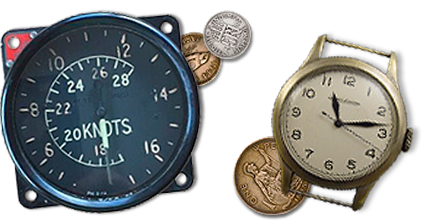
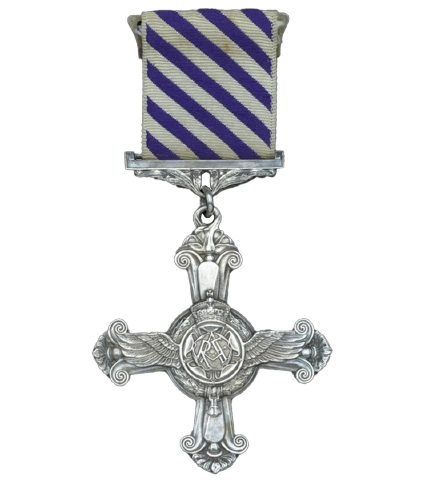
The Distinguished Flying Cross (DFC) medal.
In May 1941 I returned to the Squadron, and soon after I was dispatched to attack the German Battleship Bismark. This notorious ship had just sunk HMS Hood and was racing for the French port of Brest, I was sent to lie in wait and attack it before it got there. In the event, Royal Navy Swordfish torpedo bombers got there first and crippled the Bismark, allowing the Navy’s surface fleet to finish it off.

German Battleship Bismark.
MY AIRCRAFT
The Hampden was a medium bomber with a crew of 4. Pilot, Navigator, Wireless Operator/gunner and a further gunner. Although it was a vast improvement on the biplanes 83 Squadron had been flying just before the war opened, in reality it was already obsolete. Early daylight raids had been a disaster, the bomber was too slow to evade German fighters and its guns were no match for the Germans either. The distinctive fuselage, designed to give the aircraft a sleek, aerodynamic profile, led to the Hampden earning its nickname of “The Flying suitcase”.
Crew: 4
Span: 21.09 m
Length: 16.32 m
Height: 4.37 m
Wing area: 63.90 m²
Empty weight: 5,344 kg
Loaded weight: 8,508 kg
Engine: 2 x Bristol Pegasus XVIII 9-cylinder radial engines
Engine power: 980hp each
Maximum speed: 410 km/h
Rate of climb: 5.00 m/s
Range normal: 1,095 km
4 or 6 x 7.7mm Vickers K machine guns (1 flexible, 1 nose, 1 or 2 dorsal, 1 or 2 ventral)
1,814kg of bombs/mines or 1 x 18in torpedo
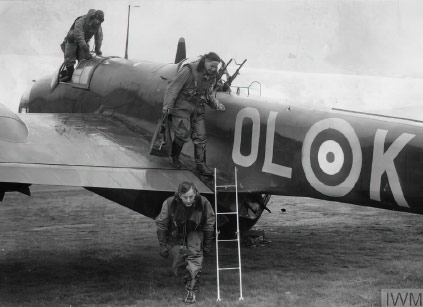
An 83 Squadron crew disembark from their Hampden.
MY ROLE
On this mission, I was the pilot. The Hampden had just one seat for a pilot and I would remain in this position throughout the mission.

MY SQUADRON
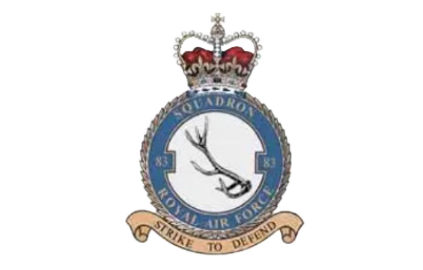
Motto: Strike to Defend
83 Squadron was formed at Montrose on 7th January 1917 as a night bomber squadron. Moving to France in March 1918, the squadron saw action on the western Front and took part in operations to counter the German’s Spring Offensive. Following the end of the war, the Squadron was disbanded on 31 December 1919.
With the threat of war once again looming over Europe, 83 squadron was reformed at RAF Turnhouse on 4th August 1936, flying the Hawker Hind biplane. In March 1938, the squadron re-equipped with Handley Page Hampdens at RAF Scampton.
In the summer of 1940, the Squadron received one of Scampton’s three Victoria Crosses due to the heroic actions of Flight Sergeant John Hannah in putting out the fire on a battle damaged Hampden.
In December 1941, the squadron re-equipped with the infamous Avro Manchester, but the poor reliability of this aircraft led to them quickly being re-equipped with the legendary Avro Lancaster, with which the squadron fought the rest of the war. In August 1942, the squadron became a pathfinder unit, leading large bomber formations to their targets and laying target indicator flares so they could be more accurately hit.
After the war, they flew Avro Lincolns and Avro Vulcans, before being disbanded in 1969.
THE ACCIDENT
We had returned from a dangerous mission to bomb Dusseldorf in Germany and were within just a few minutes of landing safely. However, amongst the blackout, where Scampton should lie, the wreckage of Hampden AE223 was still burning, following the fatal explosion of a loose bomb.
Investigators never fully established the reason for our crash, but they did note that we had turned our navigation lights off. It is possible that we did this because we feared that a German intruder was the cause of the Hampden’s demise and we had no intention of becoming their second victim.
But a threat much more close to home lurked in the darkness. Possibly having had similar thoughts, 83 Squadron Hampden X3121 had also turned its navigation lights off. With no way to see each other, our two aircraft collided and fell onto Whale Jaws Farm, Hackthorn, just to the North of the airfield. All 8 of the crew were killed.
CASUALTIES – 25TH AUGUST 1941
Hampden AD967 49 Squadron
Sgt Owen Bernard McMahon (Pilot) (Buried Scampton) MORE
Sgt Ian Donald MacKinnon (Pilot) (Buried Brookwood Military Cemetery)
Sgt Gathorne Field Upton (Air Gunner) (Buried Brandon Hill Cemetery Surrey)
Sgt Ernest Welbourne, (Wireless Operator)
Hampden X3121 83 Squadron
Flt Lt Anthony Mills DFC (Pilot) (Buried Scampton)
Sgt Bernard Mason (Wireless Op/Air Gunner) (Buried Scampton) MORE
Sgt John Sommerville (Buried Largo Cemetery in Levan)
Flt Sgt Donald Sharpe (Buried Portslade Cemetery Brighton)
Where Next
Visit Sgt MacKinnon’s grave at the Brookwood Military Cemetery.
BROOKWOOD MILITARY CEMETERY is owned by the Commonwealth War Graves Commission and is the largest Commonwealth war cemetery in the United Kingdom, covering approximately 37 acres. Opened in 1917 and now contains over 5000 graves.
Brookwood is 30 miles from London (M3 to Bagshot and then A322). The main entrance to Brookwood Military Cemetery is on the A324 from the village of Pirbright. There is a direct train service from Waterloo to Brookwood Station from which there is an entrance to the cemetery.
The postcode for Brookwood is GU24 0JB.
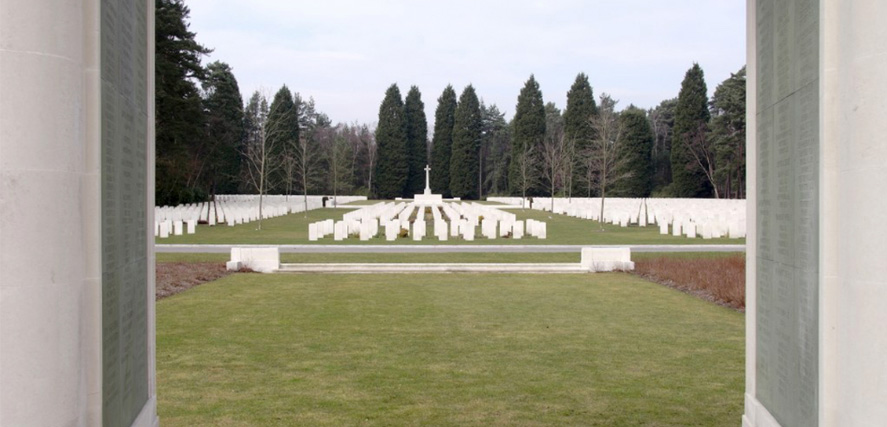
ON THIS DAY IN WORLD WAR TWO – 25TH AUGUST 1941
In Tehran, an Anglo-Russian occupation begins.
In Ratsenburg, Germany Hitler holds talks with Mussolini. Hitler rails against Spain’s refusal to enter the war on their side.
